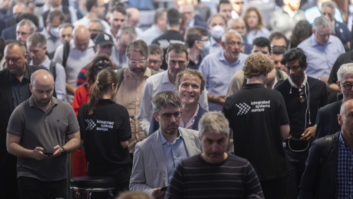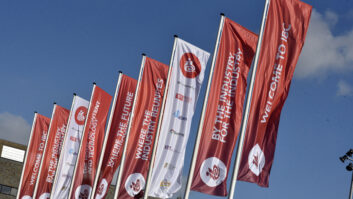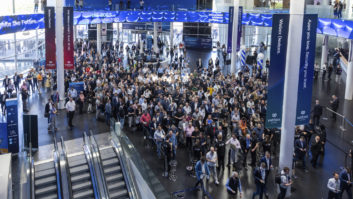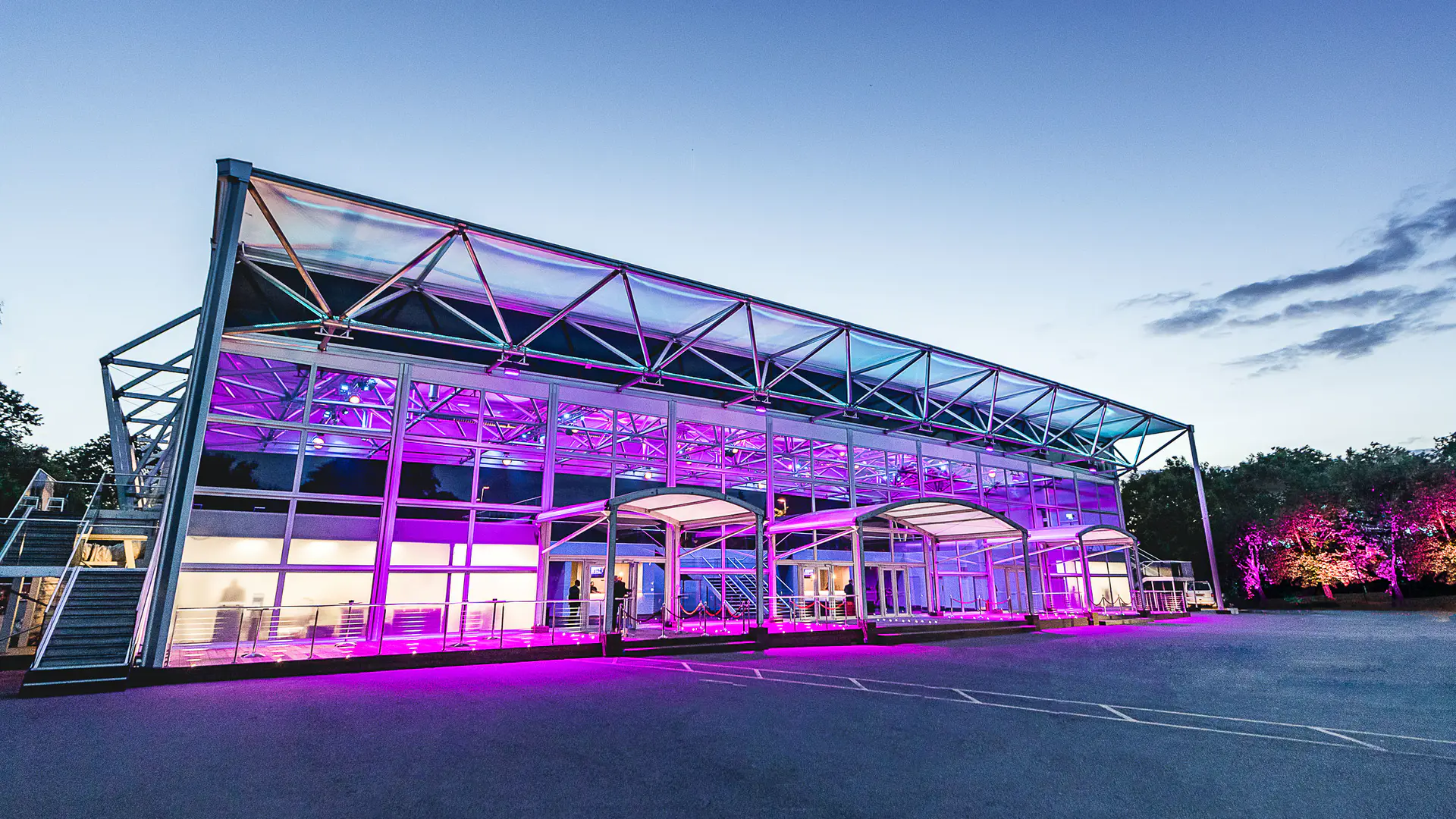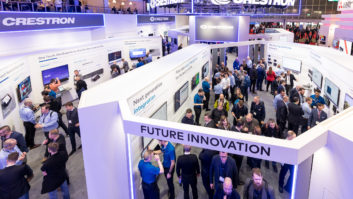The major trade shows want to be leading the sustainability discussions, rather than reacting passively to the trends. Among the key priorities for the organisers of IBC, ISE and InfoComm are informing and guiding manufacturers, creating forums for collaboration, and running energy efficient venues that set the standard.
“We want to demonstrate leadership in sustainability and foster collaboration with a global community,” says Jo Mayer, head of marketing, IBC. “By promoting sustainability throughout our content programme, our goal is to bring together the best minds, most innovative companies, and most forward-thinking leaders to collaborate on solutions.”
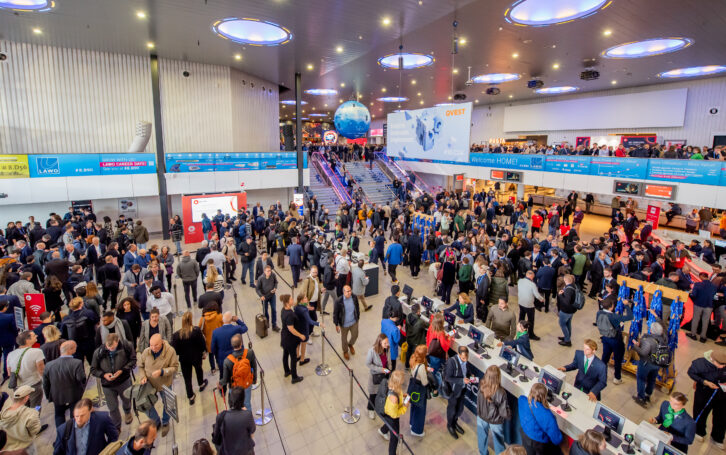
To monitor its own energy performance, IBC has carried out an annual carbon footprint audit since 2018 and offset it through international social development schemes. “We’ve achieved carbon neutral status and we’re working towards becoming Net Zero by 2050 as part of our ongoing sustainability journey,” Mayer adds.
Extensive programmes
All the trade shows Installation spoke to have introduced extensive sustainability event programmes. At ISE, for example, in Barcelona from 30 October to February 2, CEDIA debuted its ‘Sustainability Workshop’, which addressed climate change, nature loss, and social resilience. “The workshop also gave attendees the opportunity to delve into the complexities of being both part of the problem and part of the solution,” commented Mike Blackman, managing director of ISE.
ISE teamed up with Sustainability in AV (SAVe) for the 2024 show after first collaborating last year. The non-profit organisation helps commercial integration, pro AV and low voltage industries achieve the 2030 Sustainable Development Goals (SDGs). Blackman comments: “The interest and enthusiasm SAVe generated in 2023 prompted the creation of the SAVe Ambassadors program, which today includes industry leaders from a growing number of countries, including Canada, Mexico, Colombia and Brazil. SAVe will of course also be represented again at ISE 2025, because sustainability will be one of the mega-trends addressed.”
Over in the US, at InfoComm, which was at the Las Vegas Convention Centre in June, there was a dedicated programme to advance sustainability in pro AV. It featured a presentation from the new AVIXA Sustainability Advisory Group, a SAVe Certification Workshop and show floor tours of manufacturers focusing on sustainability. Kateryna Dubrova, senior market analyst, connectivity & services, observes: “Attendees learned about what manufacturers are doing to advance sustainability, steps for creating a plan, and how different trades can work together to provide solutions.”
Additional steps
At IBC, in Amsterdam in mid-September, the organisers took additional steps this year to create a sustainable event, according to Jo Mayer. For the first time, IBC partnered with the consultancy Hope Solutions to develop a sustainability strategy aligned with global standards like the UN Sustainable Development Goals (SDGs). “Our latest initiatives are about embedding more sustainable practices not only in the way we run our event, but also in how we help educate stakeholders and foster collaboration with the entire media ecosystem,” Mayer says.
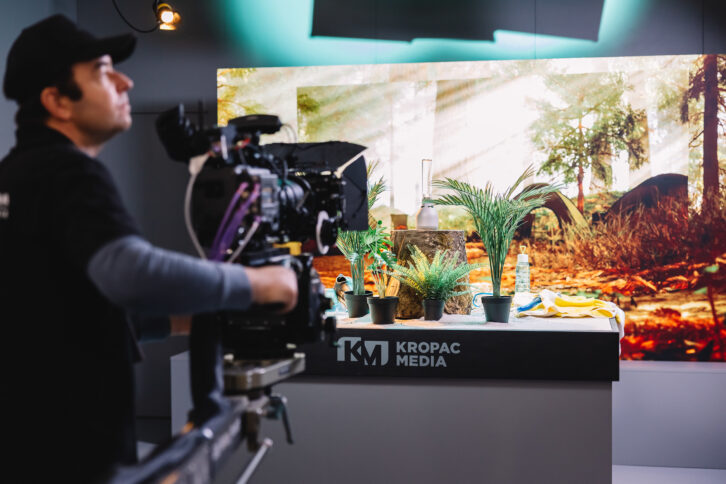
IBC’s content programme organised multiple sessions about improving energy consumption. For example, the technical paper session ‘Sustainability – energy, efficiency, spanning devices to delivery systems’ assessed the energy cost of delivering a streaming service. And the Accelerator programme included the innovative sustainability project ‘ECOFLOW’. Mayer explains: “The project tackled the environmental impact of media consumption by developing consolidated metrics to measure it at the major steps of the technology supply chain, aligning energy-saving features into a unified user experience.”
The show’s dedicated sustainability category in the IBC Innovation Awards inspired new solutions from the likes of France Télévisions, Greening of Streaming, and Anton/Bauer. Meanwhile, the Media Tech ‘Sustainability in Action’ event featured real-world case studies from industry leaders about implementing sustainable practices in media.
Of course, the products and services on display at this year’s IBC emphasised energy efficiency and waste reduction. In particular, cloud-based technologies were promoted for their ability to reduce hardware dependency, and virtual production tools were highlighted as ways to streamline production and minimise travel. There was also an increased focus on the lifecycle of media technology products. “Companies are now looking at recyclability, longer product lifespans, and ways to minimise electronic waste,” Mayer says.
Sustainable venues
Not only the programmes, but also the trade shows’ venues themselves reflect the emphasis on sustainability. ISE’s home, the Fira de Barcelona Gran Via, is powered by 100 percent renewable energy from sources such as solar, wind, hydraulic, biomass, tidal, geothermal and biogas. It covers the venue’s energy, as well as stands, exhibition spaces and congress activities. Gran Via also boasts 25,900 photovoltaic solar panels installed over 135,000 sqm of the roof, generating 5.86 GWh of electricity/year and eliminating 2,200 tons of CO² emissions annually.
In addition, Fira’s in-house food and beverage department, Gastrofira, has launched various initiatives to reduce food waste and reduce the use of plastics. The company also works to cut CO2 with local suppliers, all of whom must adhere to strict sustainable guidelines.
Meanwhile, ISE’s official accommodation partner, bnetwork has updated its hotel service with a “sustainable choices” filter highlighting options with sustainable development initiatives. To inspire responsible booking, bnetwork provides live updates displaying the positive impact made by guests who choose these eco-friendly accommodations.
Furthermore, as in previous years, ISE offers free public transport in Barcelona and shuttle buses between the city centre and the Fira.
ISE’s broadcast counterpart, IBC, has similar ambitions. IBC is also working closely with its venue, in this case the RAI Amsterdam, to minimise energy use, as well as promoting sustainable transport, and sourcing food responsibly. The RAI operates entirely on Dutch wind energy, and its rooftops are equipped with nearly 4,000 solar panels that provide clean energy for both the venue and the adjacent nhow RAI hotel.
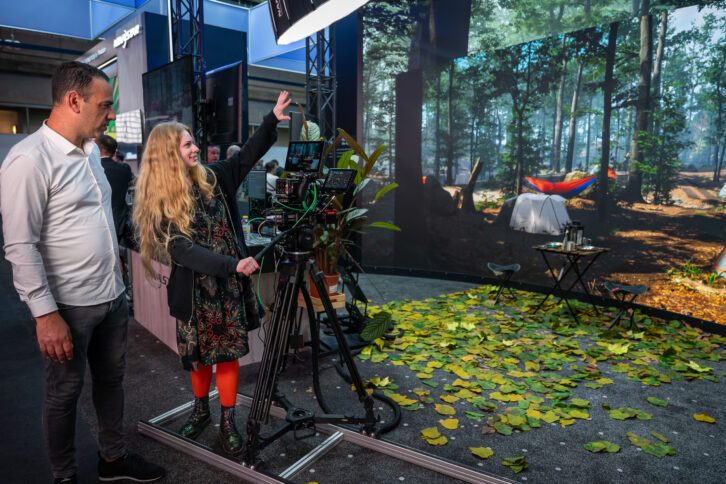
RAI Amsterdam was the first convention centre in Europe to be certified with Platinum status by EarthCheck, which recognises sustainable destinations, and is working towards achieving net zero in 2050. “Leading the way in reducing our impact is a goal we share with the RAI,” adds Mayer.
Green transportation
RAI Amsterdam’s location is well-connected to public transport, and visitors are encouraged to use these greener options. The RAI has worked with local authorities and bike-sharing services to make cycling an attractive option for attendees. Electric taxis are available, and IBC is supporting the RAI’s goal of transitioning to an all-electric taxi fleet.
One final innovation at IBC is the invitation to all exhibitors to hand in unwanted items to be distributed among various social initiatives in the Amsterdam region, including refugee centres, food banks, and local schools.
Trade shows are perfectly placed to witness the growth of important trends. At IBC, for example, a major theme is the shift toward net-zero emissions targets across the industry. Mayer says media technology companies are setting ambitious goals to reduce their carbon footprints, not only through direct operational changes, but also by addressing emissions throughout their value chains. She adds: “Circular economy principles are gaining traction, with more companies focusing on reducing waste, extending product life cycles, and designing for recyclability.”
At ISE, Mike Blackman believes a key trend is the integration of systems to optimise energy use in smart buildings. Companies are using AI to monitor how a building is used, then operating it more efficiently. Blackman explains: “Examples include integrated systems such as smart lighting that dims automatically in bright light, or turns off when a room is unoccupied; control and remote management of HVAC (heating, ventilation, and air conditioning) that senses how many bodies are in a space and adapts accordingly; and meeting room monitoring that puts AV solutions to sleep when meetings aren’t scheduled. All these solutions reduce a building’s carbon footprint.”
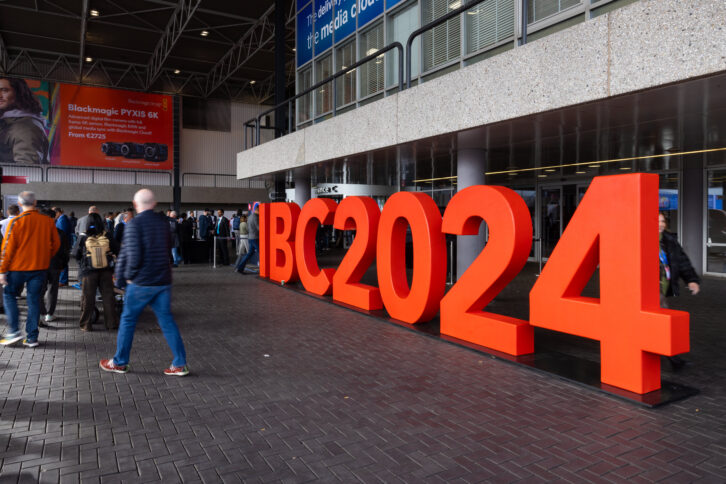 Dan Goldstein, chief marketing officer, AVIXA, has a slightly different perspective. He points out that 15 years ago, there were already discussions about energy management of buildings during the InfoComm show, but relatively little thought was given to the energy consumption of core AV technologies, such as projectors, screens, loudspeakers, and lighting fixtures. That has completely switched around. In contrast, he says now almost all the hardware is designed to be more energy efficient out of the box. He explains: “That is partly in response to government legislation and partly as a result of consumer demand. We now see touch screens that operate at lower brightness levels as the default setting, while advances in LED technology continue to drive down the energy consumption of direct-view screens and lights.”
Dan Goldstein, chief marketing officer, AVIXA, has a slightly different perspective. He points out that 15 years ago, there were already discussions about energy management of buildings during the InfoComm show, but relatively little thought was given to the energy consumption of core AV technologies, such as projectors, screens, loudspeakers, and lighting fixtures. That has completely switched around. In contrast, he says now almost all the hardware is designed to be more energy efficient out of the box. He explains: “That is partly in response to government legislation and partly as a result of consumer demand. We now see touch screens that operate at lower brightness levels as the default setting, while advances in LED technology continue to drive down the energy consumption of direct-view screens and lights.”
Software ascending
Despite the improvements to energy efficiency of AV tech, another key trend is the move away from hardware altogether – to software, he believes. Goldstein says this trend will continue to reduce the AV industry’s contribution to e-waste. He comments: “AV system functionality that once required power-hungry hardware can now be done at the computer device level, or in the cloud. There is also the fact that the increasing robustness of core AV hardware often now means it enjoys a second or even a third life – there is now a thriving market in recycled screens in digital signage, for instance.”
Goldstein says AVIXA and InfoComm want to position themselves as sustainability thought leaders. In 2023, the AVIXA Board of Directors created the Sustainability Advisory Group to support the pro AV industry in becoming more sustainable. The group consists of expert volunteers who meet quarterly to assist the industry and AVIXA with its sustainability goals. The 2024 goals include building resources for the EU Corporate Sustainability Reporting Rules and developing a plan for building community and engagement in the Sustainable in AV channel on AVIXA Xchange. “The Sustainability Advisory Group will grow and change their focus in the future to meet the needs of AV professionals seeking to understand how to make their companies more sustainable,” he says.
No one in the industry can afford to ignore the issue, he believes, as government regulations continue to grow more stringent. The entire AV value chain needs to ensure it is compliant. AVIXA sees one of its roles as ensuring people are up to date with the latest rules. Goldstein says it has set up a Sustainability Working Group to act as a resource.
“The sustainability regulations are going to be important in ways many currently don’t recognise. For example, a North American systems integrator wanting to pitch for a job at the local office of an EU-headquartered company is going to need to have its own sustainability policy in order to stay in the running for the work,” he points out.
